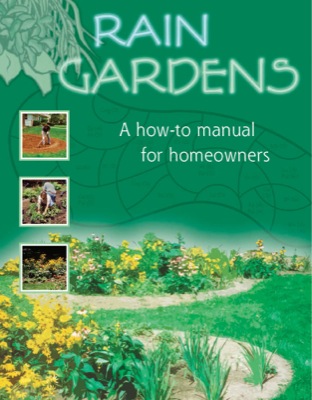
At Chris Meyer and Paul Schollmeier’s Winona home three basins now capture storm water runoff from the driveway. Vegetables, perennials and annuals thrive in them. Rain water collected in barrels boosts production.
Chris Meyer and Paul Schollmeier took on the challenge of creating a net-zero energy home. Then, as they watched water race down their steeply sloped driveway to the street and mused about how to avoid using City water on terraced vegetable gardens, their curiosity shifted to water: Where does it go? What does it pick up on the way? How do we keep it where it falls, so we can use it?
To start, Paul and Chris installed three 100-gallon rain barrels to collect water for their garden. Then, Chris was introduced to rain gardens as a University of Minnesota Extension Master Gardener intern. “They’re simple,” she says, “so why don’t we have more of them?”
Online, Chris discovered Maplewood, Minn., where there are more than 620 home rain gardens plus 60 on City land, thanks to classes and basic help from the City of Maplewood, which pays to excavate the shallow depressions for homeowners and buys plant plugs. “It’s less expensive to put in residential rain gardens than to install new curbs and gutters,” said Assistant City Engineer Chris Cavitt, “Homeowners do the planting.”
Now that Chris knows the benefits of rain gardens, she plans to make sure there are more in Winona, where runoff moves quickly to the Mississippi River. If you’d like to build a home rain garden, help create a demonstration rain garden, or attend rain garden classes, e-mail Chris Meyer or Winona Master Gardeners.


Facts Make It Easier To Get Something Done!
1) A rain garden isn’t a pond. Water usually soaks into the ground in a few hours, so it’s dry most of the time.
2) Native plants keep 30% more water in the garden than just grass or rocks.
3) The best guide Chris has seen for building a rain garden is University of Wisconsin Extension’s brochure “Rain Gardens: A How-To Manual For Homeowners.“
Rain gardens are shallow basins that filter water from roofs, sidewalks and driveways into the ground. They don’t hold water, but absorb it so trash, soil, pollutants and large amounts of water don’t flow directly to Lake Winona or the Mississippi River.

